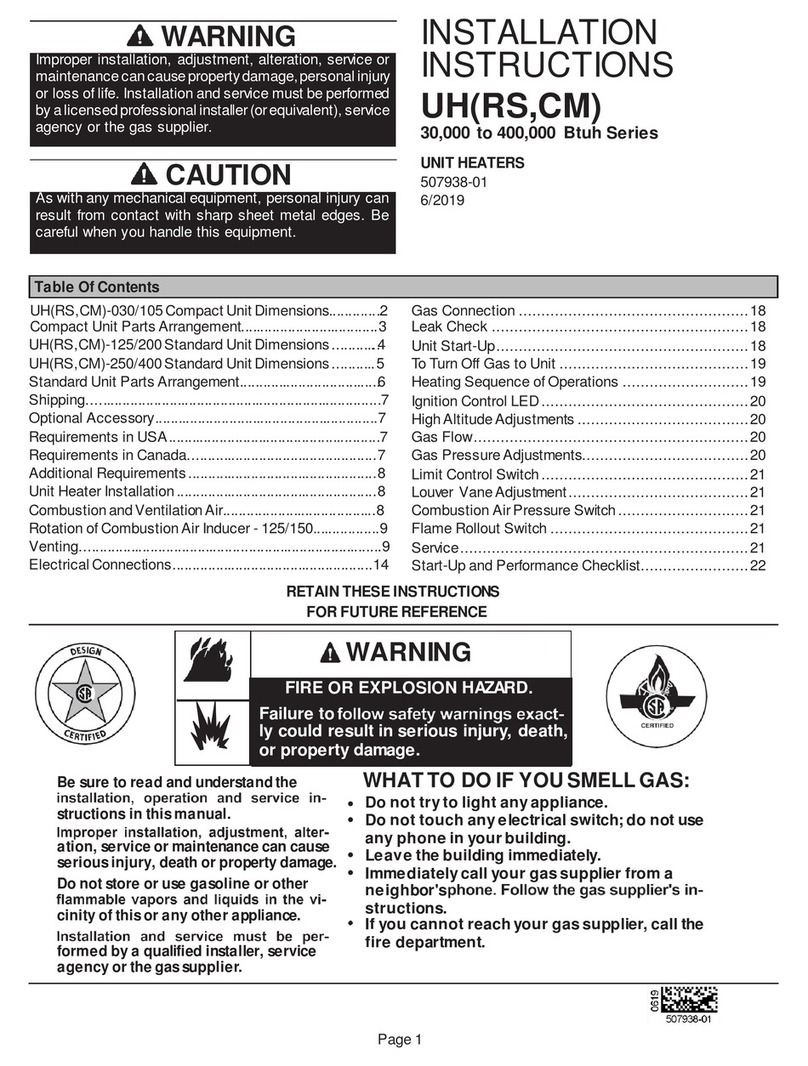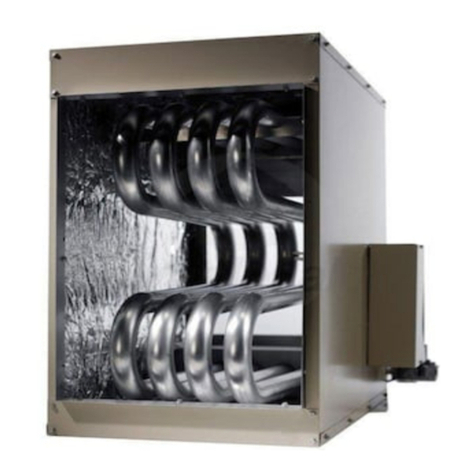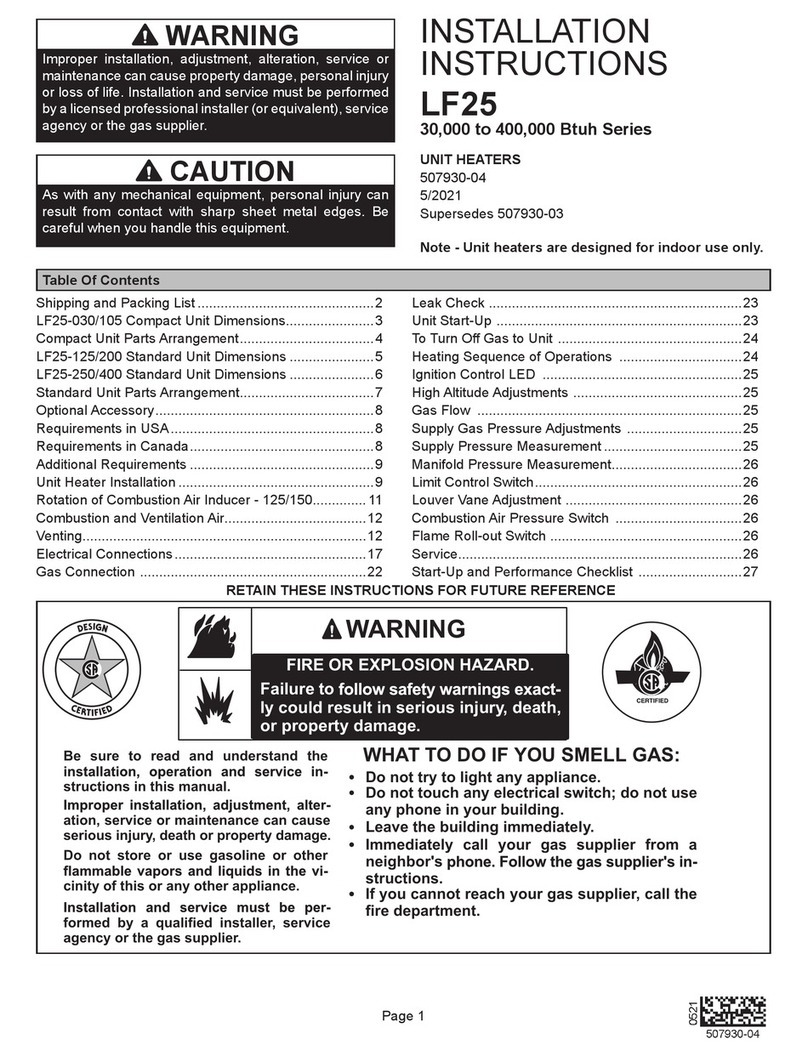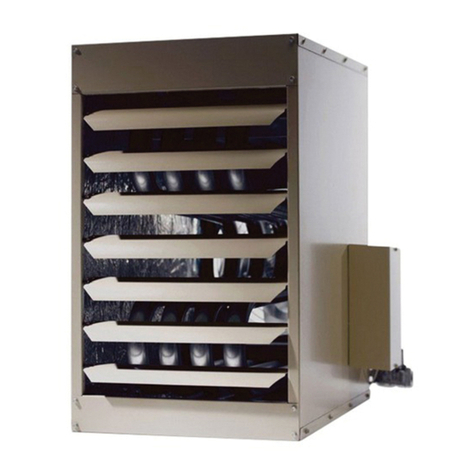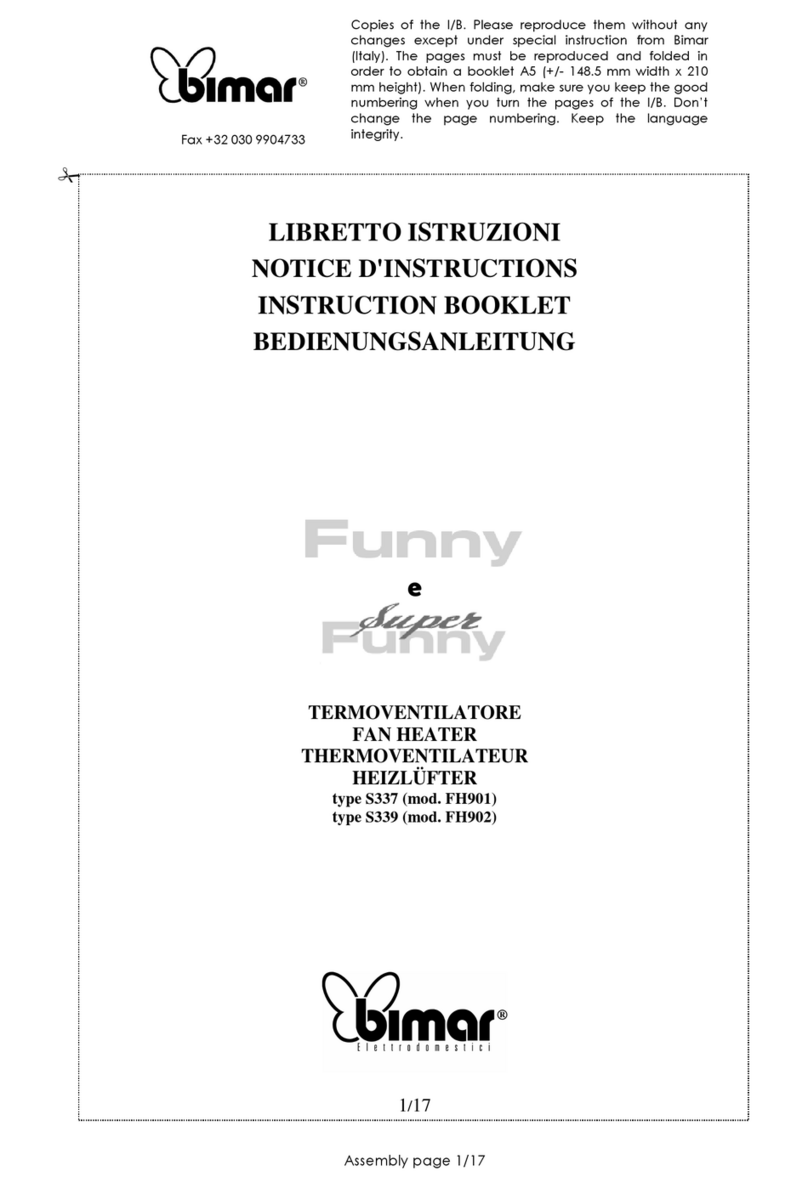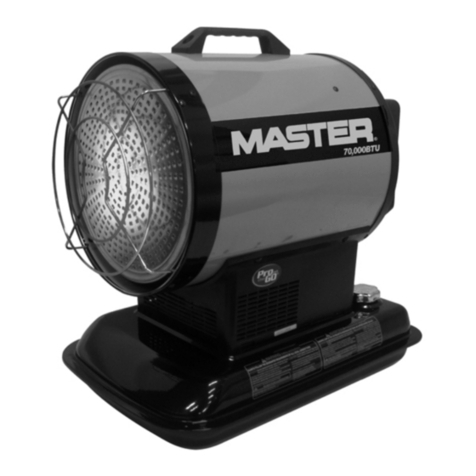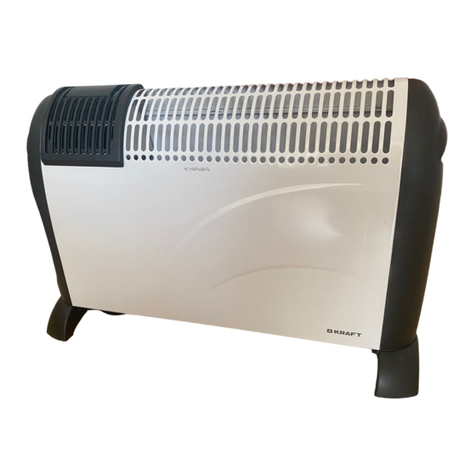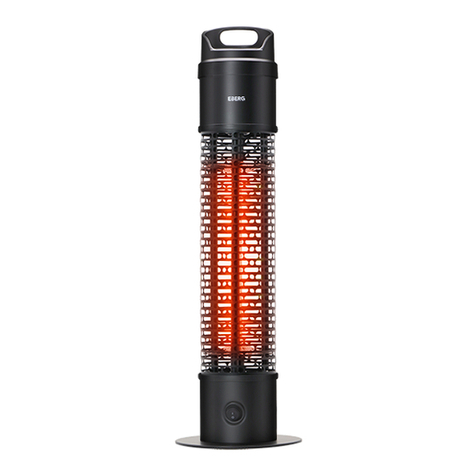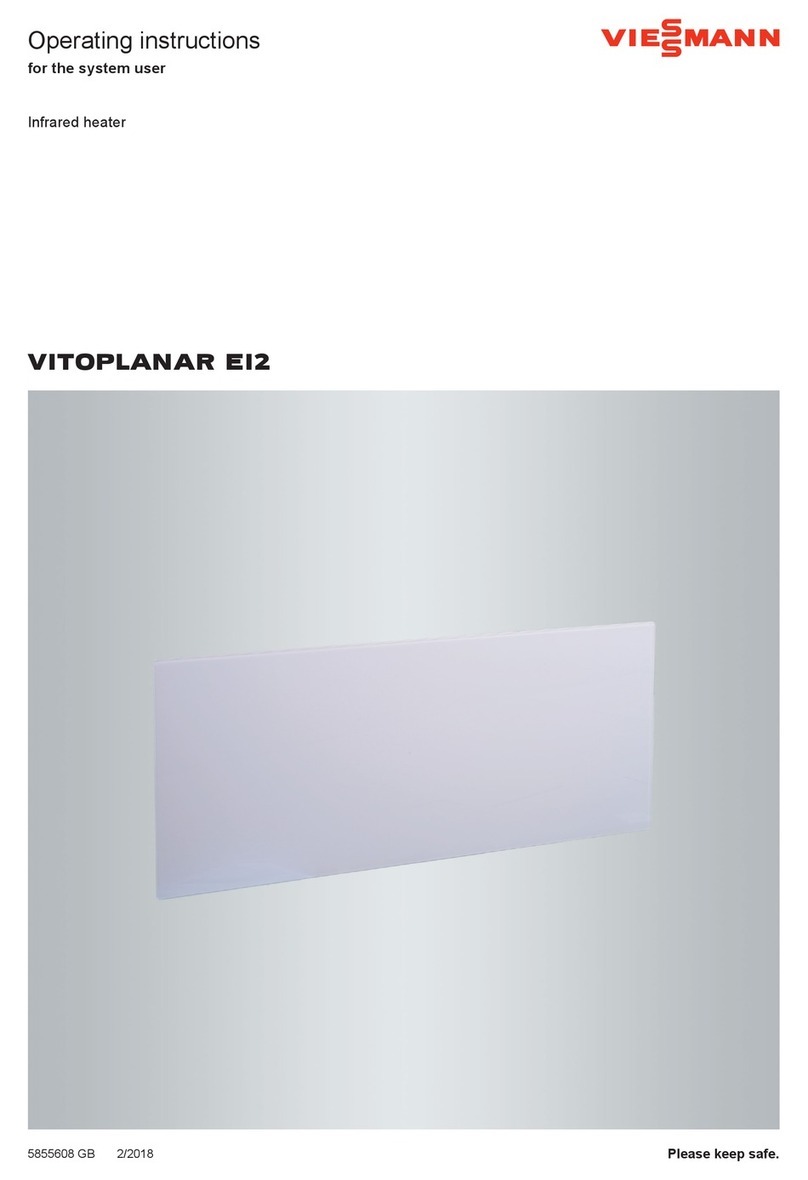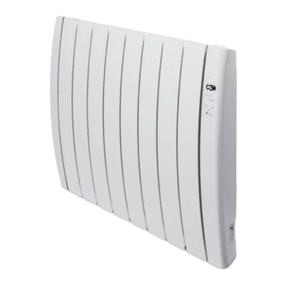Adp UH Series User manual

Page 1
Shipping and Packing List ..............................................2
UHRS-030/105 Compact Unit Dimensions.....................3
Compact Unit Parts Arrangement...................................4
UHCM-125/200 Standard Unit Dimensions ....... ............5
UHCM-250/400 Standard Unit Dimensions ........ ...........6
Standard Unit Parts Arrangement...................................7
Optional Accessory.........................................................8
Requirements in USA.....................................................8
Requirements in Canada................................................8
Additional Requirements ................................................9
Unit Heater Installation ...................................................9
Combustion and Ventilation Air.....................................12
Rotation of Combustion Air Inducer - 125/150.............. 11
Venting.......................................................................... 12
Electrical Connections..................................................17
Gas Connection ...........................................................22
Leak Check ..................................................................23
Unit Start-Up ................................................................23
To Turn O Gas to Unit ................................................24
Heating Sequence of Operations ................................24
Ignition Control LED ....................................................25
High Altitude Adjustments ............................................25
Gas Flow .....................................................................24
Gas Pressure Adjustments ..........................................25
Limit Control Switch......................................................26
Louver Vane Adjustment ..............................................26
Combustion Air Pressure Switch .................................26
Flame Roll-out Switch ..................................................26
Service..........................................................................26
Start-Up and Performance Checklist ...........................27
Table Of Contents
WARNING
Improper installation, adjustment, alteration, service or
maintenance can cause property damage, personal injury
or loss of life. Installation and service must be performed
by a licensed professional installer (or equivalent), service
agency or the gas supplier.
CAUTION
As with any mechanical equipment, personal injury can
result from contact with sharp sheet metal edges. Be
careful when you handle this equipment.
INSTALLATION
INSTRUCTIONS
UH(RS,CM)
30,000 to 400,000 Btuh Series
UNIT HEATERS
507938-05
7/2021
Supersedes 507938-04
Note - Unit heaters are designed for indoor use only.
RETAIN THESE INSTRUCTIONS FOR FUTURE REFERENCE
WHAT TO DO IF YOU SMELL GAS:
Do not store or use gasoline or other
cinity of this or any other appliance.
formed by a qualified installer, service
agency or the gas supplier.
Do not try to light any appliance.
Leave the building immediately.
Do not touch any electrical switch; do not use
any phone in your building.
Immediately call your gas supplier from a
neighbor's
structions.
If you cannot reach your gas supplier, call the
fire department.
FIRE OR EXPLOSION HAZARD.
Failure to
ly could result in serious injury, death,
or property damage.
WARNING
Be sure to read and understand the
structions in this manual.
ation, service or maintenance can cause
serious injury, death or property damage.

Page 2
Shipping and Packing List
HANGING
BRACKETS
BAG
ASSEMBLY
UNIT
HEATER
30-105 Units
Package 1 of 1 contains:
1-Unit Heater
2-Hanging brackets
(4” Flue transition is factory-installed)
Bag assembly containing:
1-Warranty card
1-Brand logo badge
8-#10-16 X 5/8” SDST screws
1-3/8” Snap bushing
3-Wire ties
The heater is shipped completely assembled. Check the unit
for shipping damage. The receiving party should contact the
last carrier immediately if any shipping damage is found.
Shipping and Packing List
UNIT
HEATER
BAG
ASSEMBLY
REMOVE BRACKETS SECURING
UNIT TO SHIPPING CRATE
BEFORE INSTALLATION
FLUE
TRANSITION
BURNER
BOX HOOD
125-400 Units
Package 1 of 1 contains:
1-Unit Heater
1-Burner box hood
1-Rectangular to round ue transition
- 4” diameter on 125-150 (factory-installed)
- 5” diameter on 175-300 (provided and eld-installed)
- 6” diameter on 350-400 (provided and eld installed)
Bag assembly containing:
1-Warranty card
1-Brand logo badge
8-#10-16 X 5/8” SDST screws
2-Wire ties
The heater is shipped completely assembled. Check the unit
for shipping damage. The receiving party should contact the
last carrier immediately if any shipping damage is found.

Page 3
2-3/4
(70)
8-3/4
(222) 10-1/2
(267)
4-1/4
(108)
1/2
[13]
1
(25)
21
(533)
1
(25)
A
D
C
29
(737)
B21
(533)
BACK VIEW
FLUE
OUTLET
GAS
INLET
DIRECT
DRIVE FAN
ELECTRICAL
INLET
BRACKETS (2)
HANGING
TOP VIEW
HEAT EXCHANGER
AIR
FLOW
MOUNTING SLOTS (Typical)
5/16 x 3 Inches (8 x 76 mm)
HANGING
BRACKETS (2)
SERVICE
ACCESS
PANEL
SIDE VIEW
ADJUSTABLE
LOUVERS
1
(25)
UHRS-030 / 105 DIMENSIONS - Inches (mm)
THERMOSTAT
INLET
Model
No.
A B C D
in. mm in. mm in. mm in. mm
UHRS-030A
UHRS-045A 12-3/8 314 6-1/2 165 4 102 6 152
UHRS-060A
UHRS-075A 17-1/2 445 6-1/4 159 6-1/8 156 3-5/8 92
UHRS-090A
UHRS-105A 23 584 7-7/8 200 9-1/8 232 3-5/8 92

Page 4

Page 5
A
C
D
ADJUSTABLE
LOUVERS
FRONT VIEW
COMBUSTION AIR
INDUCER
DIRECT DRIVE FAN
GAS VALVE
SIDE VIEW
HEAT
EXCHANGER
AIR
FLOW
ELECTRICAL /
THERMOSTAT
INLETS
FLUE OUTLET
TOP VIEW
(4) 3/8-16 MOUNTING NUTS
FOR UNIT SUSPENSION
16 (406)
1/2 (13)
5-3/8
(137)
B
1/2 (13)
31-7/8 (810) 10-5/8
(270)
35-1/4
(895)
10-1/2
(267)
2-1/2 (64)
3-1/8 (79)
UHCM-125 / 200 DIMENSIONS - Inches (mm)
Model
No.
A B C D
in. mm in. mm in. mm in. mm
UHCM-125
UHCM-150 19-1/2 495 18-1/2 470 12-1/4 311 4-3/4 121
UHCM-175
UHCM-200 25 635 23-3/4 603 9-1/2 241 3 76

Page 6
A
C
B
ADJUSTABLE
LOUVERS
TOP VIEW
ELECTRICAL /
THERMOSTAT
INLETS
FLUE OUTLET
(4) 3/8-16 MOUNTING NUTS
FOR UNIT SUSPENSION
FRONT VIEW
AIR
FLOW
SIDE VIEW
COMBUSTION AIR
INDUCER
DIRECT DRIVE FAN
GAS VALVE
HEAT
EXCHANGER
16 (406)
1/2 (13)
31-7/8 (810) 10-5/8
(270)
5-3/8
(137)
10-1/2
(267)
1/2 (13)
35-1/4
(895)
3
(76)
2-5/8 (67)
3-1/8 (79)
UHCM-250 / 400 DIMENSIONS - Inches (mm)
Model
No.
A B C
in. mm in. mm in. mm
UHCM-250
UHCM-300 37-5/8 956 36-1/2 927 15-7/8 403
UHCM-350
UHCM-400 47 1194 45-3/4 1162 20-1/2 521

Page 7

Page 8
Optional Accessory
Units require a changeover kit when the unit is to be used
with LP/propane gas. The kit is ordered separately. See
Engineering Handbook.
Requirements in USA
Installation of gas unit heaters must conform with local
building codes or, in the absence of local codes, with the
current edition of ANSI Z223.1, National Fuel Gas Code.
Installation in aircraft hangers must be in accordance with
the current edition of ANSI/NFPA No. 409, Standard for
Aircraft Hangers.
Installation in parking structures must be in accordance
with the current edition of ANSI/NFPA No. 88A, Standard
for Parking Structures.
Installation in repair garages must be in accordance with
the current edition of ANSI/NFPA No. 88B, Standard for
Repair Garages.
These units are approved for residential garage or
non-conned living space applications. For installation
in a residential garage or non-conned living space, unit
must be installed so that burners and ignition source are
located no less than 18” (457mm) above oor. Heater
must be located or protected to avoid physical damage
by vehicles. Refer to the current edition of ANSI Z223.1,
National Fuel Gas Code.
Authorities having jurisdiction should be consulted before
installation. Air for combustion and ventilation must con-
form to the methods outlined in the current edition of ANSI
Z223.1, Section 5.3, Air for Combustion and Ventilation, or
applicable provisions of local building codes.
The National Fuel Gas Code (ANSI Z223.1) is available
from:
American National Standard Institute Inc.
11 West 42nd Street
New York, NY 10036
These unit heaters are CSA International design-certied.
These unit heaters are certied for installation to combus-
tible material as listed in Table 1 and on unit rating plate.
Accessibility and service clearances must be observed in
addition to re protection clearances.
All electrical wiring and grounding for unit must be in ac-
cordance with the regulations of the current edition of
ANSI/NFPA No. 70, National Electric Code.
The National Electric Code is available from:
National Fire Protection Association
1 Batterymarch Park
PO Box 9101
Quincy, MA 02269-9101
Requirements in Canada
These instructions are intended only as a general guide
and do not supersede local codes in any way. Authorities
having jurisdiction should be consulted before installation.
The installation must conform with local building codes or,
in the absence of local codes, with the current edition of
CSA-B149 installation compliance codes. All electrical wir-
ing and grounding for the unit must also comply with the
current edition of CSA C22.1, Canadian Electrical Code.
These unit heaters are CSA-certied for the installation
clearances listed on the rating plate and in table 1.
Adequate clearance must be provided around the appli-
ance and around air openings into the combustion cham-
ber. Provision shall be made for service accessibility.
NOTE - Fire protection clearances may be exceeded to
provide additional space for service and accessibility.
GARAGE / WAREHOUSE INSTALLATIONS
1 - In a storage area, clearance from heaters to
combustible materials must be such that the
combustible material must not attain a temperature
above 160°F (71°C) by continuous operation of the
unit.
WARNING
Combustible materials that are aected by exposure to
temperatures LESS than 160°F or 71°C (plastics, plastic
wrap, styrofoam, cardboard, etc.) must be stored well
away from this heater. Discharge air temperatures for
these units can approach 250°F or 121°C.
2 - Maintain an 8-foot (2m) minimum clearance from the
oor to the bottom of the heater. Refer to the current
edition of CSA-B149 for installation compliance
codes.
AIRCRAFT HANGER
1 - In an area where aircraft are housed or serviced, a
10-foot (3m) minimum clearance from the highest
surface of the aircraft to bottom of the heater must
be maintained.
2 - In other areas, an 8-foot (2m) minimum clearance
from the oor to bottom of heater must be maintained.
3 - Heaters should be located so that they are protected
from damage from aircraft or other appliances needed
for servicing of aircraft. Refer to requirements of the
enforcing authorities.
RESIDENTIAL
These units are approved for residential garage or
non-conned living space applications. For installation
in a residential garage or non-conned living space, unit
must be installed so that burners and ignition source are
located no less than 18” (457mm) above oor. Heater
must be located or protected to avoid physical damage by
vehicles. Refer to the current edition of CSA-B149 for in-
stallation compliance codes. In a conned area, the heat-
er must be installed in accordance with the current edition
of CSA-B149 installation compliance codes. Be sure to
check with local codes and ordinances for additional re-
quirements.

Page 9
*6” is for single wall. Double wall B-vent clearance will be in accordance
with the manufacturer’s listing.
**Access panel or control box side of unit should have 24” (610mm)
clearance.
Additional Requirements
The Commonwealth of Massachusetts stipulates the fol-
lowing additional requirements:
1 - Gas furnaces shall be installed by a licensed
plumber or gas tter only.
2 - The gas cock must be “T handle” type.
Unit Heater Installation
The appliance shall not be installed downstream from
evaporator coils or cooling units.
Install the unit in the desired location as governed by
clearances, vent connection, air direction, gas supply,
electrical supply and service accessibility.
Unit is shipped ready for installation.
TABLE 2
MAXIMUM MOUNTING HEIGHTS
Unit Feet (Meters)
UHRS-030/075 10 (3.0)
UHRS-090/105 12 (3.7)
UHCM-125/150 16 (4.9)
UHCM-175/200 20 (6.1)
UHCM-250/400 30 (9.1)
TABLE 1
UNIT CLEARANCES TO COMBUSTIBLE MATERIALS
Unit Top Side** Bottom Back Flue
in mm in mm in mm in mm in mm
030/105 1 25 1 25 1 25 18 457 6* 152
125/400 6 152 18 457 1 25 18 457 6 152
UHCM-125/400 UNITS
Four mounting nuts are furnished. Refer to dimension
illustration. Mounting nuts will accommodate 3/8” x 16
threaded rods.
CAUTION
Do not install unit heaters in close proximity to re
sprinklers. Unit heater normal operating temperatures
could result in re sprinkler activation.
1 - Push each louver to the left to depress spring and
release locking tab on the other end (locking tab
keeps the louver in place for shipping).
2 - Rotate louvers to direct airow as desired.
3- Cut threaded rods to desired length and slide a 3/8”
nut onto the rod.
4 - Slide a at washer onto the threaded rod AFTER the
nut (7/16” inside diameter X 1” outside diameter X
1/16” thick washer).
5 - Screw the rods (four) into the mounting nuts on the
unit. See gure 1.
6 - Tighten nuts to secure unit to rods.
7 - Install the 3D brand badge provided with the unit.
8 - Remove and discard the shipping brackets. Replace
four screws on each side. See gure 2.
9 - Install the burner box hood. See gure 3.
10- 175/400 Units Only - Install the ue transition, provided
with the unit, onto the combustion air blower ue outlet.
If needed, loosen the upper right two or three screws
securing the combustion air blower. Slide the transition into
place and secure loosened screws.
FIGURE 1

Page 10
FIGURE 2
FIGURE 3

Page 11
UHRS-30/105
Unit may be installed as shown in gure 4 o r rotated
180°.
1 - Push each louver to the right to depress spring and
release locking tab on the other end (locking tab
keeps the louver in place for shipping).
2 - If installing unit in a rotated position - release locking
tabs in the same manner as previous step. Rotate
each louver 180° and reinstall. Remove and retain
screws securing access panel. Rotate access panel
180° and re-secure using retained screws.
3 - Rotate louvers to direct airow as desired.
4 - Choose location for mounting brackets.
5 - Align mounting brackets with pilot holes on the top or
bottom (when rotating) edge of the unit. Secure with
screws provided in bag assembly.
6 - To support unit, secure mounting bracket to ceiling
joist or truss. Unit may also be supported using
support rods as shown in gure 4.
7 - Install the 3D brand badge provided with the unit.
INSTALL UNIT HEATER
SUPPORT
RODS
MOUNTING
BRACKETS
(2)
ACCESS PANEL
(030 / 105 SHOWN)
FIGURE 4
Rotation of Combustion Air Inducer (UHCM-125 & 150 Only)
The combustion air inducer on UHCM-125 & 150 may
be rotated 90° either to the left or right of the original
vertical position in order to better suit the application.
NOTE - It is not permissible to rotate the combustion
air inducer on UHRS-030/105 and UHCM-175/400.
Rotate the combustion air inducer assembly as follows:
1 - Remove the heater from the carton. Decide the best
unit heater orientation. The vent can be installed in
one of three discharge positions: up, left, or right.
2 - If the inducer is to be rotated, follow the instructions
in this section; otherwise, refer to instructions under
“Venting” section.
3 - Before making an electrical or gas connections, use
a socket to remove the four screws which secure the
combustion air inducer to the ue box. See gure 5.
4 - Rotate the inducer 90° to the desired position.
Reinsert and tighten the inducer securing screws.
5 - The unit heater is now ready for installation as
described in the Venting section.
FLUE BOX AND COMBUSTION AIR
INDUCER ASSEMBLY
125/150
FLUE BOX
FLUE BOX
GASKET
ORIFICE
PLATE
VEST PANEL
ORIFICE
PLATE GASKET
COMBUSTION
AIR INDUCER
FIGURE 5

Page 12
WARNING
Insucient combustion air can cause headaches,
nausea, dizziness or asphyxiation. It will also cause
excess water in the heat exchanger resulting in rusting
and premature heat exchanger failure. Excessive
exposure to contaminated combustion air will result
in safety and performance related problems. Avoid
exposure to the following substances in the combustion
air supply:
Permanent wave solutions
Chlorinated waxes and cleaners
Chlorine base swimming pool chemicals
Water softening chemicals
De-icing salts or chemicals
Carbon tetrachloride
Halogen type refrigerants
Cleaning solvents (such as perchloroethylene)
Printing inks, paint removers, varnishes, etc.
Hydrochloric acid
Cements and glues
Antistatic fabric softeners for clothes dryers
Masonry acid washing materials
If indoor air is to be used for combustion, it must be free of
the following substances or the life of the heat exchanger
will be adversely aected: chlorine, carbon tetrachloride,
cleaning solvent, halogen refrigerants, acids, cements and
glues, printing inks, uorides, paint removers, varnishes,
or any other corrosives.
NOTE - Local codes may supersede any of these provisions.
GENERAL RECOMMENDATIONS AND
REQUIREMENTS
Unit heaters must be vented in compliance with the lat-
est edition of the National Fuel Gas Code (NFPA 54 /
ANSI Z223.1) in the USA and with CSA-B149.1 codes in
Canada, as well as applicable provisions of local building
codes, and the following instructions.
030-150 Units - The transition is a part of the combus-
tion air blower.
175-400 Units - A sheet metal transition is supplied
with this certified unit. It must not be modified or al-
tered and must be installed on the outlet of the com-
bustion air inducer assembly prior to the installation
of the vent connector. Failure to comply with this re-
quirement will void the certification of the unit by the
approval agencies.
Note - Different manufacturers have different joint
systems and adhesives. Do not mix pipe, fittings or
joining methods from different manufacturers.
Insulate any sections passing through unheated spaces
to minimize condensation. For excessive condensation
problem, a tee with a drip leg or clean-out maybe required.
Venting
NOTE - The gas vent is a passageway, vertical or nearly
so, used to convey flue gases from an appliance, or its
vent connector, to the outside atmosphere. The vent con-
nector is the pipe or duct that connects a fuel-gas-burning
appliance to a gas vent or chimney.
Adequate facilities for supplying air for combustion and
ventilation must be provided in accordance with the cur-
rent edition of ANSI Z223.1, section 5.3 and CSA-B149
installation compliance codes, or applicable provisions of
local building codes.
All gas-red appliances require air to be used for com-
bustion. In many buildings today, there is a negative in-
door air pressure caused by exhaust fans, etc. If sucient
quantities of combustion air are not available, the heater
or another appliance will operate in an inecient manner,
resulting in incomplete combustion which can result in the
production of excessive carbon monoxide.
Combustion and Ventilation Air
TABLE 3
-030/400 CONNECTION PIPE SIZES
Model Flue Outlet
in. (mm)
030, 045, 060, 075, 090, 105, 125, 150 4 (102)
175, 200, 250, 300 5 (127)
350, 400 6 (152)

Page 13
A single-wall, metal vent pipe used as a vent connector in
residential or commercial applications, or as a vertical gas
vent in commercial applications, must have all seams and
joints sealed with pressure-sensitive aluminum tape or
silicone rubber sealant. The aluminum tape must have a
temperature rating of at least 400°F (204°C), i.e., 3M 433
or equivalent. Silicone rubber sealant must have a tem-
perature rating of 482°F (250°C), i.e., Dow Corning RTV-
736 or equivalent. All joints must be secured with at least
two corrosion-resistant screws. All joints must be checked
for gas tightness after installation.
VERTICAL VENTS USING METAL VENT PIPE -
COMMERCIAL AND RESIDENTIAL INSTALLATIONS
These compact unit heaters are listed as Category 1
appliances for vertical vent installations.
1 - These unit heaters are to be used with NFPA- or
ANSI-approved chimneys or U.L.-listed type B-1 gas
vents, or listed chimney lining systems for gas venting
where applicable, as well as the modications and
limitations listed in gure 6. Seal single-wall, metal
pipe according to General Recommendations and
Requirements section.
2 - A single-wall metal pipe may be used as a vent
connector between the unit heater and the vertical
gas vent in all applications; however, single-wall
metal pipe cannot be used for vertical gas vent in
residential applications.
3 - Keep the vent connector runs as short as possible
with a minimum number of elbows. Refer to the
current edition of ANSI Z223.1 or CSA-B149
installation compliance codes for maximum vent and
vent connector lengths.
4 - The entire length of a single-wall metal vent connector
shall be readily accessible for inspection, cleaning
and replacement.
5 - Single-wall, metal pipe used as vertical gas vent in
commercial applications must not pass through any
attic, interior wall, concealed space, or oor.
VENT TERMINATION ON SINGLE-WALL VERTICAL VENT RUNS
SINGLE-WALL VENT PIPE WITH
SINGLE-WALL TERMINATION
SINGLE-WALL VENT PIPE WITH
DOUBLE-WALL (TYPE B-1) TERMINATION
ROOF FLASHING
ROOF PITCHED
FROM 0” TO 45”
2” CLEARANCE
THIMBLE
CLEARANCE TO BE
AS SPECIFIED ON
TYPE “B” VENT PIPE.
12” MAX
ROOF FLASHING
ROOF PITCHED
FROM 0” TO 45”
SEAL JOINT BETWEEN SINGLE-WALL VENT AND “B” VENT TERMINATION
AND THE OPEN SPACE BETWEEN THE SINGLE WALL VENT PIPE AND
THE OUTER PIPE OF THE “B” VENT TERMINATION.
Commercial Application Only
24 INCHES (610mm) MIN.
+ SNOW DEPTH (MAX)
FOR THE AREA
24 INCHES (610mm) MIN.
+ SNOW DEPTH (MAX)
FOR THE AREA
FIGURE 6

Page 14
6 - The unit may be vented vertically as a single appliance
or in a common vent with other gas-red appliances.
In common venting situations, vent connectors for
other appliances must maintain a 4” (102mm) vertical
separation between the vent connectors. Refer to
common venting tables in the current editions of
ANSI Z223.1 or CSA-B149 installation compliance
codes for proper vent size.
7 - Gas vent clearance to combustible material is 6”
(152mm) for single-wall, metal pipe except where
a listed clearance thimble is used. Clearance to
combustible material for type B-1 vent or factory-built
chimney is per manufacturer’s instructions.
8 - The vent connector shall be supported without any
dips or sags. Vertical vents shall be supported in
accordance with their listing and manufacturers’
instructions. Any horizontal sections of vent
connector runs shall have a slope up to the vertical
vent of at least 1/4” per foot (6mm per 305mm).
9 - All vertical type B-1 vents, single-wall, metal pipe
(commercial applications), or listed chimney lining
systems must be terminated with a UL-listed (or other
equivalent agency) vent cap or listed roof assembly.
10- The gas vent must extend at least 2 feet(0.6m)
above the highest point where it passes through a
roof of a building unless otherwise specied by ANSI
Z223.1 or CSA-B149 installation compliance codes.
The gas vent must also extend at least 2 feet(0.6m)
higher than any part of a building within a horizontal
distance of 10 feet (3m). The gas vent must extend
at least 5 feet(1.5m) above the highest connected
equipment ue collar
HORIZONTAL VENTING
NOTE - Common venting is not allowed when horizontally
venting the unit heater.
NOTE - Precautions must be taken to prevent degradation
of building materials by flue products.
These unit heaters are a Category III appliance when
vented horizontally.
1 - In residential applications, horizontal gas vent
piping must be in compliance with UL 1738 for
installations in the United States, and ULC S636 for
installations in Canada. Refer to venting sections for
vent termination clearance requirements.
2 - The minimum horizontal vent length is 5 feet(1.5m).
3 - Refer to table 4 for maximum horizontal vent lengths.
4 - Ifpossible, donot terminatethe horizontalvent through
a wall that is exposed to prevailing wind. Exposure
to excessive winds can aect unit performance. If
such a termination is necessary, use a wind block to
protect the vent termination from direct winds.
5 - Vent terminations must be free from obstructions
and at least 12” (305mm) above grade level and
maximum snow height.
6 - Do not install a horizontal vent termination directly
below roof eaves or above a public walkway, or
any other area where condensate dripping may be
troublesome and may cause some staining. Avoid
windows where steam may cause fogging or ice
buildup.
7 - Minimum clearance for horizontal vent termination
from any door, window, non-mechanical air supply
inlet is 4 feet (1.2m) below or to the side of opening;
1 foot (0.3m) above opening horizontally for United
States installations. In Canada, minimum clearance
for horizontal vent termination from any door, window,
non-mechanical air supply inlet or the combustion air
inlet to any other appliance is 12 inches (305mm) for
appliances >10,000 to 100,000 Btuh, and 36 inches
(914mm) for appliance >100,000 Btuh.
8- Vent terminal clearance to each side of a centerline
extended above a meter/regulator assembly and
service regulator vent outlet must be in accordance
with local installation codes and the requirements of
the gas supplier for installations in the United States.
In Canada the clearance to each side of a centerline
extended above meter/regulator assembly and
service regulator vent outlet must be 3 feet(1m) within
a height 15 feet (4.5m) above the meter/regulator
assembly and 3 feet (1m) to a service regulator vent.
9 - Vent termination clearance to an unvented sot or
within 2 feet (0.6m) horizontally of a ventilated sot
must be in accordance with local installation codes
and the requirements of the gas supplier.
10 - When a vent termination is inside a corner formed
by two exterior walls the clearance must be in
accordance with local installation codes and the
requirements of the gas supplier.
11 - Vent termination must be a minimum of 3 feet(1m)
above any forced air inlet (includes fresh air inlet for
other appliance, such as a dryer) if within 10 feet
(3m) horizontally for United States installations. In
Canada, vent termination must have 6 feet (2m)
minimum clearance to a mechanical air-supply inlet
of any building.
12 - When termination is routed through combustible
wall, vent termination must be supported using a
restop to maintain clearances specied on unit
rating plate. Inside edge of vent termination must
be at least 16” (406mm) from outside wall
TABLE 4
MAXIMUM HORIZONTAL VENT CONNECTOR AND
HORIZONTAL VENT PIPE LENGTHS
No. of
Elbows
30, 45, 60, 75, 90, 105, 125,
150, 175, 200, 350, 400 250 & 300
ft m ft m
1 25 7.6 35 10.7
2 20 6.1 30 9.1
3 15 4.6 25 7.6
4 10 3.0 20 6.1
5 5 1.5 15 4.6
6 - - 10 3.0
7 - - 5 1.5

Page 15
13 - All horizontal vents which use special vent pipe for
use with Category III appliances must terminate
with a listed termination tee. Termination must
be installed in accordance with manufacturer’s
instructions.
14 - For horizontal venting, the vent pipe shall be
supported with hangers no more than 3 feet (1m)
apart to prevent movement after installation.
15 - Select a wall termination point that will maintain
either a 1/4” (6mm) per foot (305mm) rise (upward
slope) or a 1/4” (6mm) per foot fall (downward
slope) of horizontal run of vent pipe.
16 - For upward sloped vent, a condensate tee and
drain must be installed within the rst 5 feet (1.5m)
from the unit heater to protect the appliance (see
gure 7). If a exible condensate drain line is used,
the drain line must include a loop lled with water
to prevent combustion products from entering the
structure. If the unit is shut down for an extended
period of time and will be exposed to sub-freezing
temperatures, the condensate may freeze.
17 - For downward sloped vent, condensate drainage
can be collected in a tee pipe section (gure 8) with
drain loop similar to one used for upward slope vent,
or allowed to drip through the vent termination, if
permitted by authorities (gure 9).
CONDENSATE DRAIN THROUGH TEE PIPE AND DRAIN LOOP
FLUE TRANSITION
(PROVIDED)
12” (30.5CM)
MINIMUM ABOVE
HIGHEST SNOWFALL
16 INCHES MIN.
(41 CM )
GROUND LEVEL
UPWARD SLOPE ON HORIZONTAL VENT -- RESIDENTIAL OR COMMERCIAL APPLICATION
COMMON VENTING NOT ALLOWED WHEN HORIZONTALLY VENTING THE UNIT HEATER.
COMBUSTION
AIR INDUCER Category III adaptor
must be installed
before optional elbow
(if used).
LISTED WALL
THIMBLE
THROUGH
COMBUSTIBLE
WALL
NOTE - Minimum horizontal vent length is 5 ft.
This does not include termination tee. Refer to
table 4 for maximum length and number of elbows.
VENT
TERMINATION
TEE
DRAIN
TEE
DRAIN LOOP (PROVIDED BY
INSTALLER WITH WATER TRAP
TO CONDENSATE DRAIN
RESIDENTIAL APPLICATIONS --
Venting must be listed special
vent for Category III appliances.
COMMERCIAL APPLICATIONS
-- Venting may be single-wall (26
Ga) galvanized or equivalent
stainless steel vent pipe sealed
per these instructions, OR listed
special vent for Category III
appliances.
SLOPE = 1/4 IN. PER FOOT
RUN MAXIMUM.
FIGURE 7
DRAIN TEE
−
COMMON VENTING
NOT ALLOWED WHEN
HORIZONTALLY
VENTING THE
UNIT HEATER.
LISTED THIMBLE
THROUGH
COMBUSTIBLE
WALL
16 INCHES
MIN. (41 CM)
CONDENSATE DRAIN THROUGH TEE PIPE AND DRAIN LOOP
DOWNWARD SLOPE ON HORIZONTAL VENT − RESIDENTIAL OR COMMERCIAL APPLICATION
VENT
TERMINATION
TEE
Category III
adaptor must
be installed
before
optional
elbow
(if used).
DRAIN LOOP WITH WATER
TRAP TO CONDENSATE
DRAIN
(Provided by installer)
RESIDENTIAL APPLICATIONS −− Venting must be
listed special vent for Category III appliances.
COMMERCIAL APPLICATIONS −− Venting may be
single−wall (26 Ga) galvanized or equivalent
stainless steel vent pipe sealed per these instructions,
OR listed special vent for Category III appliances.
SLOPE = 1/4 IN. PER FOOT RUN MAXIMUM.
NOTE − Minimum
horizontal vent length is
5 ft. This does not
include termination tee.
Refer to table 4 for
maximum length and
number of elbows.
FIGURE 8

Page 16
COMMON VENTING
NOT ALLOWED WHEN
HORIZONTALLY
VENTING THE UNIT
HEATER.
LISTED THIMBLE
THROUGH
COMBUSTIBLE
WALL
VENT
TERMINATION
TEE
16 INCHES
MIN. (41 CM)
CONDENSATE DRAIN THROUGH VENT TERMINATION
DOWNWARD SLOPE ON HORIZONTAL VENT−RESIDENTIAL OR COMMERCIAL APPLICATION
ELBOW
OPTIONAL
DOUBLE
MALE
ADAPTER
(Cat. III
kits only)
RESIDENTIAL APPLICATIONS −− Venting must be listed special vent
for Category III appliances.
COMMERCIAL APPLICATIONS −− Venting may be single−wall (26
Ga) galvanized or equivalent stainless steel vent pipe sealed per
these instructions, OR listed special vent for Category III appliances.
SLOPE = 1/4 IN. PER FOOT RUN MAXIMUM.
NOTE − Minimum
horizontal vent length is
5 ft. This does not
include termination tee.
Refer to table 4 for
maximum length and
number of elbows.
FIGURE 9
VENTING USING A MASONRY CHIMNEY
The following additional requirements apply when a lined
masonry chimney is being used to vent the compact unit
heater.
2 - A fan-assisted unit heater may be commonly vented
into an existing lined masonry chimney provided:
a. The chimney is currently serving at least one draft-hood
equipped appliance.
b. The vent connector and chimney are sized in accordance
with venting tables.
3 - A “B1” double-wall vent or masonry chimney liner
shall terminate above the roof surface with a listed
cap or a listed roof assembly in accordance with
the terms of their respective listings and the vent
manufacturer’s instructions.
4 - Do not install a manual damper, barometric draft
regulator, or ue restrictor between the unit heater
and the chimney.
5 - If type “B1” double-wall vent is used inside a chimney,
no other appliance can be vented into the chimney.
Outer wall of type “B” vent pipe must not be exposed
to ue products.
6 - Insulation for the exible vent pipe must be an
encapsulated berglass sleeve recommended by
the exible vent pipe manufacturer.
7 - The space between liner and chimney wall should
NOT be insulated with pued mica or any other loose
granular insulating material.
IMPORTANT
Single appliance venting of a fan-assisted unit heater
into a tile lined masonry chimney (interior or outside wall)
is prohibited. The chimney must rst be lined with either
type “B-1“ vent or an insulated single-wall exible vent
lining system, sized in accordance with venting tables in
the ANSI Z223.1, or CSA-B149 installation compliance
codes.
1 - Masonry chimneys used to vent Category I units
heaters must be either tile-lined or lined with a listed
metal lining system or dedicated gas vent. Unlined
masonry chimneys are prohibited. A category I
appliance must never be connected to a chimney
that is servicing a solid fuel appliance. If a replace
chimney ue is used to vent this appliance, the
replace opening must be permanently sealed.

Page 17
8 - If B-1 vent or an insulated exible vent pipe cannot
be used as liners, the chimney must be rebuilt
to accommodate one of these methods or some
alternate approved method must be found to vent the
appliance. When inspection reveals that an existing
chimney is not safe for the intended purpose, it
shall be rebuilt to conform to nationally recognized
standards, lined or relined with suitable materials
or replaced with a gas vent or chimney suitable for
venting unit heaters. The chimney passageway must
be checked periodically to ensure that it is clear and
free of obstructions.
REMOVAL OF UNIT FROM COMMON VENT
In the event that an existing unit heater is removed from a
venting system commonly run with separate gas applianc-
es, the venting system is likely to be too large to properly
vent the remaining attached appliances. The following test
should be conducted while each appliance is in operation
and the other appliances are not in operation, yet remain
connected to the common venting system. If the venting
system has been installed improperly, the system must be
corrected.
1 - Seal any unused openings in the common venting
system.
2 - Visually inspect the venting system for proper size and
horizontal pitch. Determine there is no blockage or
restriction, leakage, corrosion, or other deciencies
which could cause an unsafe condition.
3 - In so far as is practical, close all building doors and
windows and all doors between the space in which
the appliances remaining connected to the common
venting system are located and other spaces of the
building. Turn on clothes dryers and any appliances
not connected to the common venting system. Turn
on any exhaust fans, such as range hoods and
bathroom exhausts, so they will operate at maximum
speed. Do not operate a summer exhaust fan. Close
replace dampers.
4 - Follow the lighting instructions. Place the appliance
being inspected in operation. Adjust thermostat so
appliance will operate continuously.
5 - Test for spillage at the draft hood relief opening after
ve minutes of main burner operation. Use the ame
of a match or candle, or smoke from a cigarette,
cigar, or pipe.
6 - After it has been determined that each appliance
remaining connected to the common venting system
properly vents when tested as outlined above, return
doors, windows, exhaust fans, replace dampers
and any other gas-burning appliance to their previous
condition of use.
7 - If improper venting is observed during any of the
above tests, the common venting system must be
corrected. The common venting system should be
resized to approach the minimum size as determined
by using the appropriate tables in Appendix G in the
current editions of theANSI Z223-1, or the appropriate
Category I Natural Gas and Propane appliances
venting sizing tables in the current standards of the
CSA-B149 for installation compliance codes.
Electrical Connections
NOTE - Local codes may supersede any of the provisions
outlined in this instruction.
THERMOSTAT WIRING
The unit heaters use a direct spark ignition system.
There is no pilot necessary as the spark lights the main
burner when the gas valve is turned on. The direct spark
ignition control board (A3) emits radio noise as the
sparking process is under way. The level of energy may
be sucient to disturb a logic circuit in a microprocessor
controlled thermostat. It is recommended that an isolation
relay be used when connecting the unit heaters to a mi-
croprocessor controlled thermostat.
250-400 Units Only: Units are shipped from the factory
in two-stage heating mode. When using a single-stage
thermostat or control, jumper W1 & W2 terminals on P367
5-pin thermostat plug.
Install the thermostat according to instructions provided.
Route thermostat wiring into the unit heater using the ther-
mostat inlet(s) shown in the Unit Heater dimensions in the
front of this instruction. Use 18 gauge wire or larger for
thermostat connections.
Connect thermostat wires to 5-pin P367 thermostat plug
located on the A3 ignition control board. See gure 10.
For ease of installation, disconnect P367 plug from J367,
make wire connections, and replace P367. Refer to dia-
gram on unit and appropriate diagram in this instruction.
An additional thermostat wire must be run to terminal “G”
on heater when continuous blower is desired.
P367
TERMINAL
DESIGNATIONS
P366
TERMINAL
DESIGNATIONS
LINE VOLTAGE
PLUG
(125-400 ONLY)
30-105 UNITS - CONNECT LINE
VOLTAGE TO FACTORY-
IN MAKEUP BOX
(105-400 ONLY)
THERMOSTAT
PLUG
P367 5-PIN
P366 2-PIN
FIELD WIRING CONNECTIONS
INSTALLED PIGTAILS
FIGURE 10

Page 18
LINE VOLTAGE WIRING
1 - Install a separate fused disconnect switch with the
fuse sized according to the blower motor size.
NOTE - Electrically ground unit in accordance with local
codes or, in the absence of local codes, in accordance
with the current editions of the ANSI/NFPA No. 70, Na-
tional Electrical Code or CSA C22.1, Canadian Electrical
Code, Part 1.
NOTE - Uninsulated ground wires must be wrapped in
electrical tape to avoid damage to the electrical system.
2 - Make line voltage connections as shown in gure
11. On 030-105 units, use pigtails provided in power
entry box. On 125-400 units, connect wires to 2-pin
P366 plug located on the A3 ignition control board.
For ease of installation, disconnect P366 plug from
J366, make wire connections, and replace P366.
Refer to wiring diagram on unit and the appropriate
typical diagram in this manual.
HIGH VOLTAGE WIRING
A3 IGNITION
CONTROL
L1
N
GND
FIELD PROVIDED POWER WIRING.
CONNECT TO P366 ON A3 IGNI
TION CONTROL AND GREEN
GROUND SCREW NEAR A3.
GRN-YEL
WHT
BLK
125 / 400
030 / 105
POWER
ENTRY BOX
L1N
L1NGND
FIELD PROVIDED POWER
WIRING. MAKE FIELD
POWER CONNECTIONS
IN POWER ENTRY BOX
L1N
J366
P366
GRN-YEL
WHT
BLK
FACTORY
INSTALLED
POWER WIRING.
FIGURE 11

Page 19
02
03
04
05
06
07
08
01
AA BB CC
DD EE
FF
Voltage: 120/60/1
Model: UHRSUnit Heater
Supersedes: 537992-01 Form No:
Heat Input - 030k-105k BTUH
Rev: 1.0
N
R
C
GND
GND- Gr oundingPoi nt
G
W1
W2
L1
BLK
BLK
SPARK
GRY
WH T
P19J19
WH T
WH T- RED
WH T
4
CAI-N
1
CAI-L1
COM
5XFMR -COM
6XFMR -24VAC
3XFMR -N
WH T
1XFMR -L1
4
RED
BLK
BLK
WH T
BLU
YEL2
1
COMP-001
GND- Gr oundingPoi nt
NO
GND- BOARD
GRN- YEL
33
GRN- YEL
11
WH T
2
FAN1 -N
5
FAN1 -GND
8
FAN1 -L1
WH T
2
FAN2 -N
5
FAN2 -GND
8
FAN2 -L1
GRN- YEL
WH T
BLK
FLAMESENS
NO COM
8
S47
7
S195
9
S10
5
S18
11
GV-C
12
GV-H
2
S47
1
S195
3
S10
4
S18
6
GV-M
COM
M
GR Y
WH T
WH T
WH T
WH T
WH T
BLU
BLU
PNK
BRN
537992-02
1.0
537992-02
LOWVOL TAGE THERMO STAT CONNECTI ONS
P367
J367
HE AT (W1)
BLOWER (G)
24VPOWER (R)
24VCOMMO N(C)
J363
2
1
3
5
6
24VAC- IN
R
-OUT
L1
N
GND
C
G
W1
W2
14
A3
IGNCTRL
-OUT
24VAC- IN
1FI ELDPROVI DE D
CL AS SII24VAC
THERMO STAT WI RI NG
L1
N
FI ELDPROVI DE D
POWE RWIRING.
MA KE FI ELDPOWER
CONNE CT IONS IN
POWE RENT RY BOX.
P366
HI GH VOLTAGEPOWER CONNECTI ONS
!
P365 ANDP364
AREENE RGIZED
SI MU LTANEOUS LY
GNDWIRE
AT TACHED TO
XFMR MO UNTI NG
SCREW
J374
P374
4
FACRUN TEST
J373
P364
2
P365
612
J366
118
FACTOR YINS TALLED POWE R
WI RI NG
45
P368
1
J368 739
24VAC- IN
-OUT
P363

Page 20
02
03
04
05
06
07
08
01
AA BB CC
DD EE
FF
Voltage: 120/60/1
Model: UHCMUnit Heater
Supersedes: 538025-01 Form No:
Heat Input - 125k-200k BTUH
Rev: 2.0
N
R
C
GND
GND- Gr oundingPoi nt
G
W1
W2
L1
BLK
SPARK
GRY
WH T
WH T
WH T- RED
WH T
4
CAI-N
1
CAI-L1
5XFMR -COM
6XFMR -24VAC
3XFMR -N
WH T
GRY
1
WH T
XFMR -L1
4
BLK
BLK
WH T
BLU
YEL2
1
COMP-001
GND- Gr oundingPoi nt
GND- BOARD
GRN- YEL
GRN- YEL
2
FAN1 -N
5
FAN1 -GND
8
FAN1 -L1
2
FAN2 -N
5
FAN2 -GND
8
FAN2 -L1
GRN- YEL
WH T
BLK
FLAMESENS
NO COM
WH T
8
S47
7
S195
9
S10
5
S18
11
GV-C
12
GV-H
2
S47
1
S195
3
S10
4
S18
6
GV-M
COM
M
BLU
BLU
PNK
BRN
538025-02
2.0
538025-02
LOWVOL TAGE THERMO STAT CONNECTI ONS
P367
J367
HE AT (W1)
BLOWER (G)
24VPOWER (R)
24VCOMMO N(C)
J363
1
3
5
6
24VAC- IN
R
-OUT
L1
N
GND
C
G
W1
W2
14
A3
IGNCTRL
-OUT
24VAC- IN
1
FI ELDPROVI DE D
CL AS SII24VAC
THERMO STAT WI RI NG
L1
N
FI ELDPROVI DE DPOWER WI RI NG.
CONNE CT TO P366 ANDGREEN GR OUND
SCREWLOC AT ED INSI DE UNIT.
P366
HI GH VOLTAGEPOWER CONNECTI ONS
!
P365 ANDP364
AREENE RGIZED
SI MU LTANEOUS LY
GNDWIRE
AT TACHED TO
XFMR MO UNTI NG
SCREW
J374
P374
4
FACRUN TEST
J373
P364
2
P365
612
J366
11
84
5
P368
1
J368 739
24VAC- IN
-OUT
P363
This manual suits for next models
7
Table of contents
Other Adp Heater manuals
Popular Heater manuals by other brands
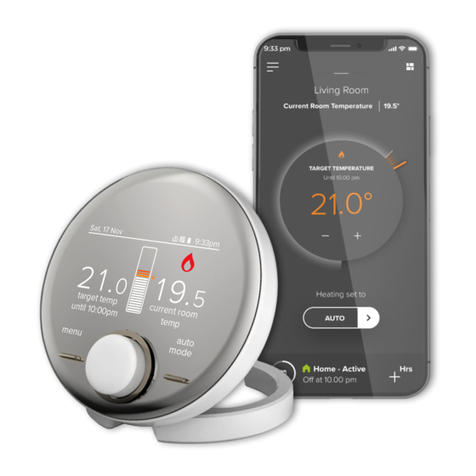
Ideal Heating
Ideal Heating Halo installation guide
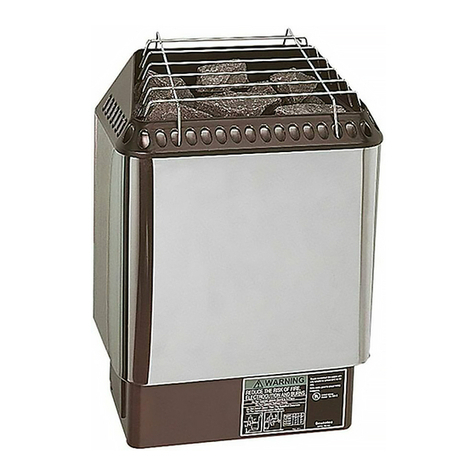
Amerec
Amerec Designer 4.5 Installation and operating instructions
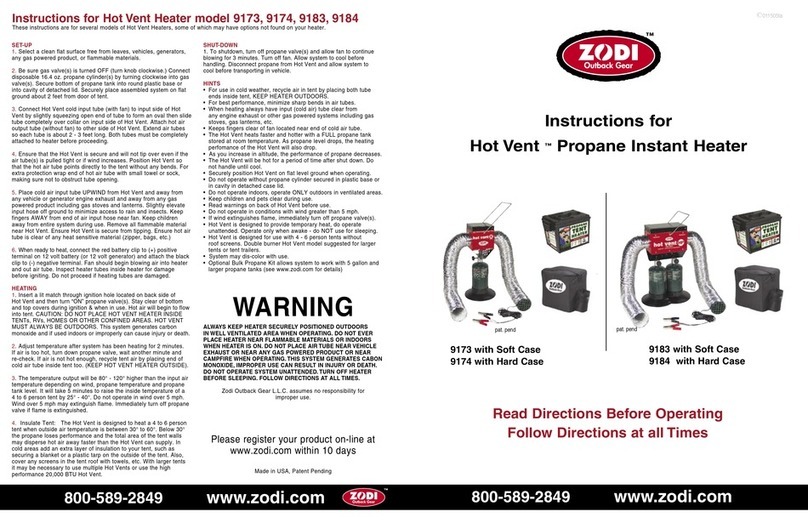
Zodi
Zodi Hot Vent 9173 instructions
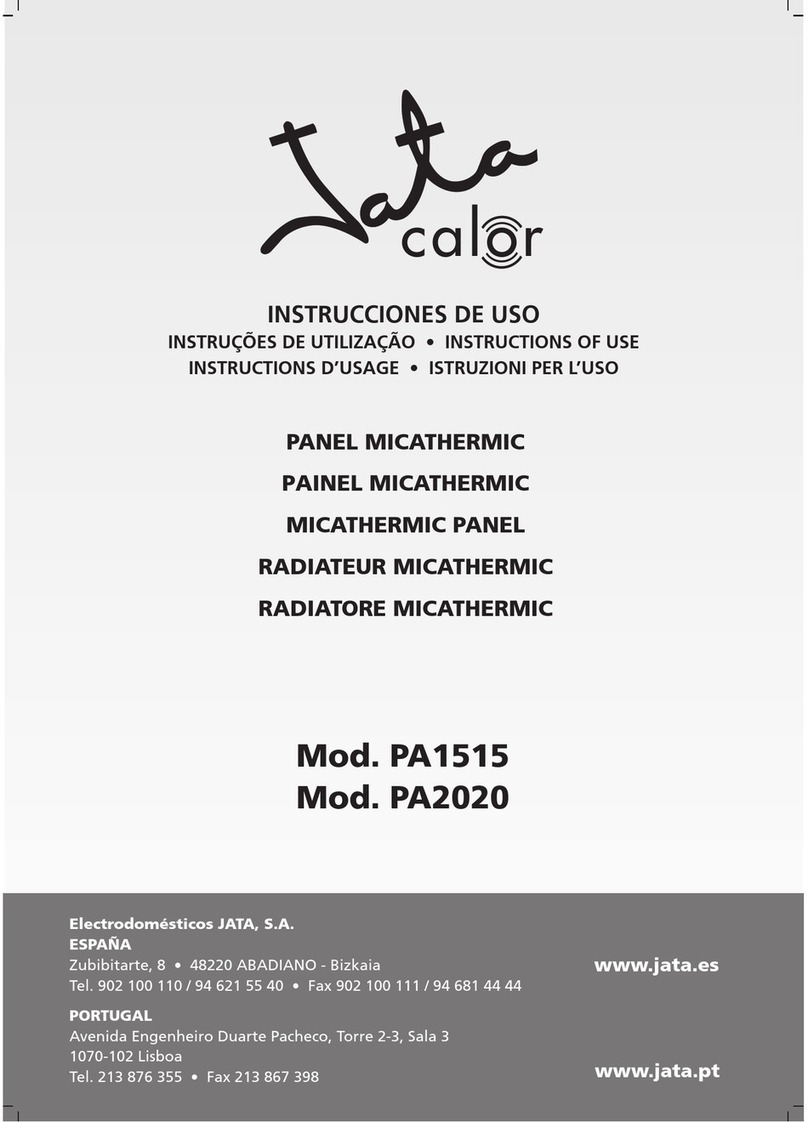
Jata calor
Jata calor PA1515 Instructions for use
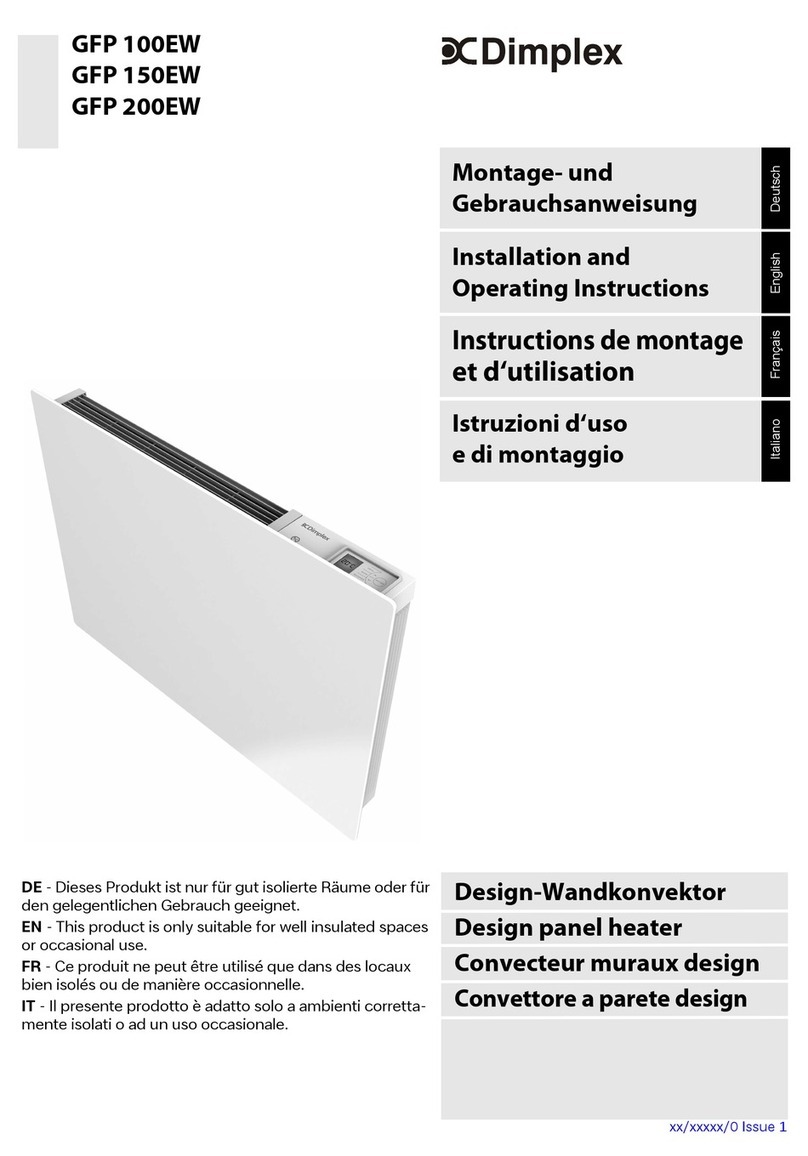
Dimplex
Dimplex GFP 100EW Installation and operating instructions
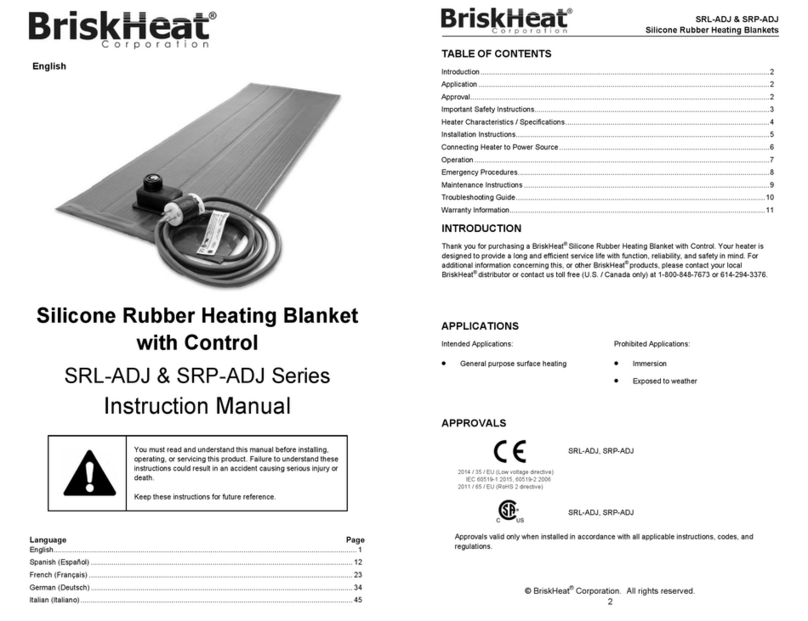
BriskHeat
BriskHeat SRL-ADJ Series instruction manual
